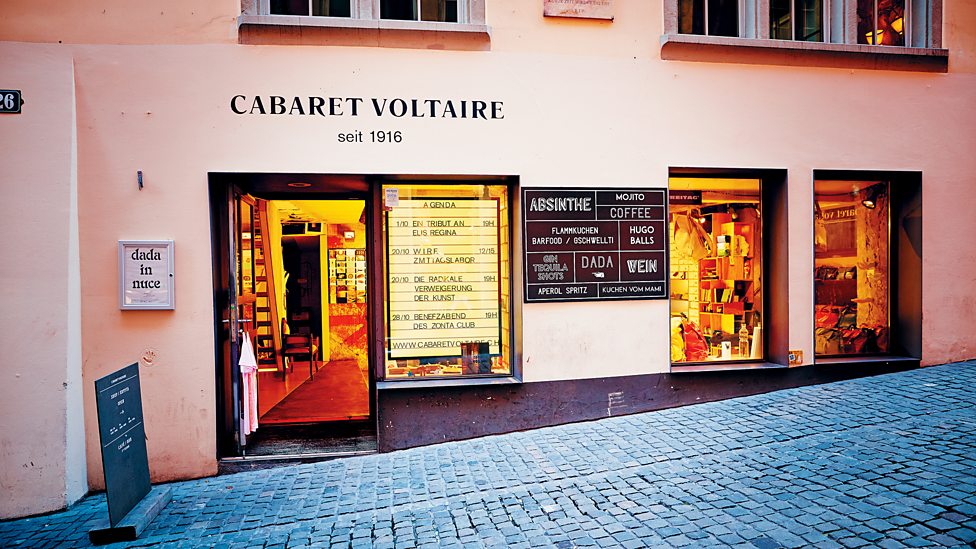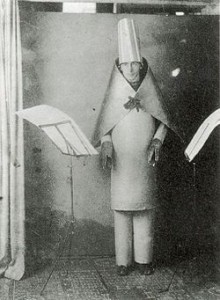One hundred years ago today, Hugo Ball and other artists opened a nightclub in Zurich and called it Cabaret Voltaire. This was no ordinary club; it was an artists’ hangout, a gallery, a performance space, and home to the Dada movement.
Dada was anti-art, anti-bourgeois, and anti-war. Switzerland was neutral in a war-torn Europe, which Ball described as a “Birdcage surrounded by roaring lions.” Dada embraced chaos and irrationality. By July of the opening year, Ball read out his Dada Manifesto. The manifesto is definitely worth reading in its entirety, but here is the opening paragraph:
Dada is a new tendency in art. One can tell this from the fact that until now nobody knew anything about it, and tomorrow everyone in Zurich will be talking about it. Dada comes from the dictionary. It is terribly simple. In French it means “hobby horse.” In German it means “good-bye,” “Get off my back,” “Be seeing you sometime.” In Romanian: “Yes, indeed, you are right, that’s it. But of course, yes, definitely, right.” And so forth.
Other key figures in the movement included Hans Arp, Hannah Höch, Johannes Baader, Tristan Tzara, Francis Picabia, George Grosz, John Heartfield, Marcel Duchamp, Beatrice Wood, Kurt Schwitters, Hans Richter, and Max Ernst, among others.
In his celebratory article in artnet News, Henri Neuendorf writes, “The radical redefinition of what art is made subsequent movements such as Surrealism, Fluxus, not to mention Punk, and our understanding of contemporary art possible.”




